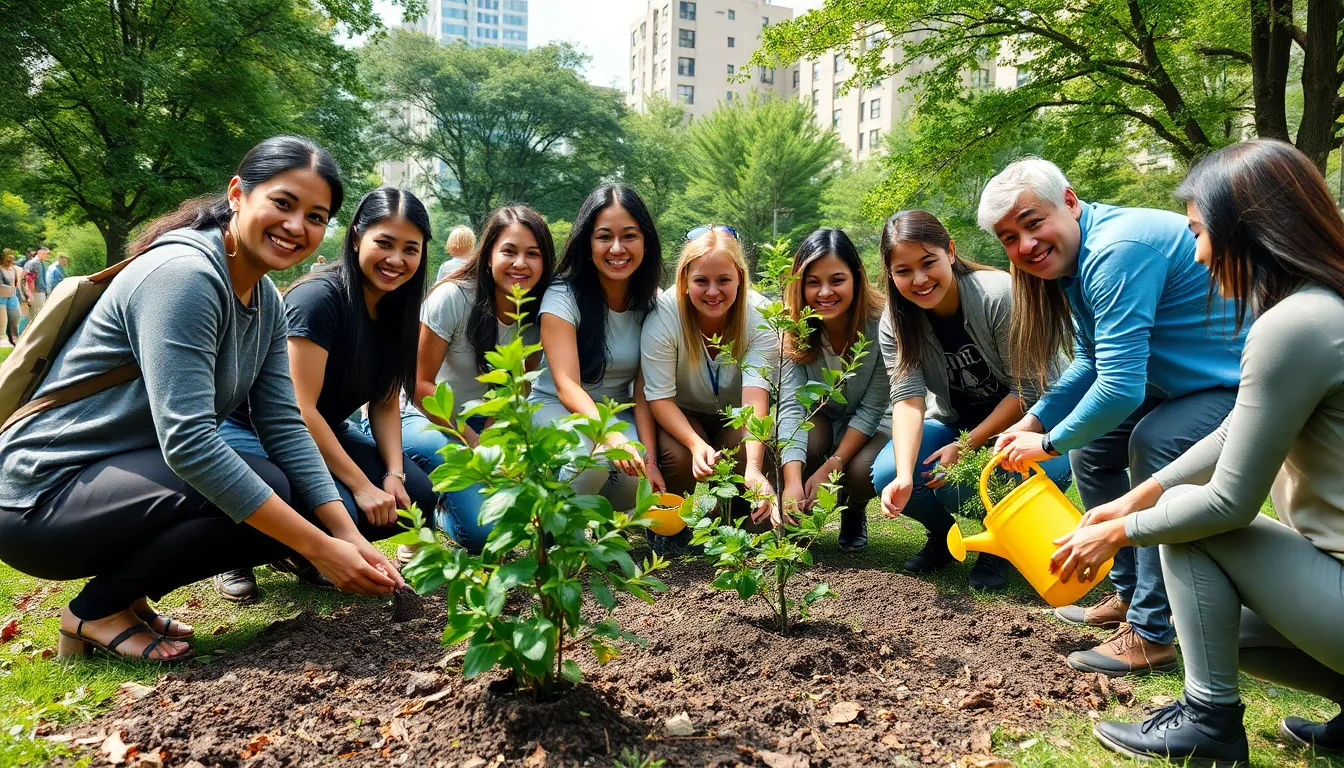In a world where Mother Nature seems to have a flair for the dramatic, climate resilience and adaptation are the superheroes we didn’t know we needed. As temperatures rise and weather patterns go haywire, it’s time to don our capes and tackle the challenges head-on. Forget about waiting for the next big storm or heatwave to ruin your day; proactive measures can help communities thrive, even when the going gets tough.
Embracing climate resilience isn’t just about survival—it’s about thriving in a world that’s constantly changing. From innovative infrastructure to sustainable practices, there’s a treasure trove of strategies ready to be explored. So, buckle up and get ready to discover how adapting to our ever-evolving climate can turn potential disasters into opportunities for growth and transformation. Who knew saving the planet could be this much fun?
Table of Contents
ToggleUnderstanding Climate Resilience and Adaptation
Climate resilience refers to the ability of communities and ecosystems to withstand and recover from climate impacts while adapting to ongoing changes. This resilience involves developing strategies to minimize vulnerability and enhance the capacity to respond effectively.
Adaptation encompasses the adjustments made in response to climatic changes, focusing on improving infrastructure, resource management, and community preparedness. For instance, cities may implement green roofs and rain gardens to manage stormwater and mitigate urban heat islands.
Innovative technologies play a vital role in enhancing resilience. Renewable energy sources, such as solar and wind, reduce dependency on fossil fuels while lessening greenhouse gas emissions. These technologies contribute to a sustainable future by providing cleaner options for energy consumption.
Collaborative efforts are critical in fostering climate resilience. Local governments, businesses, and residents must work together to identify risks and develop tailored solutions. Engaging the community fosters a sense of ownership and responsibility, making climate adaptation strategies more effective.
Research drives the understanding of climate impacts. Data collection, analysis, and modeling help identify vulnerabilities and effective adaptation measures. Scientific studies indicate regions most at risk, guiding decision-makers in prioritizing resources and interventions.
Financial investment supports climate resilience initiatives. Funding for infrastructure improvements and sustainable practices enhances communities’ adaptive capacities. Public-private partnerships can leverage resources to address climate challenges more effectively.
Ultimately, bolstering climate resilience and adaptation is a shared responsibility. Proactive planning defines how societies can not only survive climate change but also thrive amid its challenges.
Importance of Climate Resilience

Climate resilience plays a crucial role in withstanding climate impacts while promoting sustainable growth. Emphasizing proactive strategies enhances community stability.
Economic Benefits
Economic stability increases with climate resilience. Communities often experience reduced costs through efficient resource management. Investing in sustainable infrastructure creates jobs and drives local economies. Renewable energy projects provide financial returns while lowering energy bills. Adaptation measures also improve property values by making areas less vulnerable to disasters. Communities benefit financially from strategic planning that mitigates risks associated with climate change. Businesses thrive in environments that promote sustainability and innovation. Positive shifts in consumer behavior toward green products further enhance economic prospects.
Social Benefits
Social cohesion strengthens with climate resilience initiatives. Communities engaging in collaborative planning foster stronger relationships among residents. Active participation in climate adaptation projects builds pride and ownership. Individuals often report improved mental health when involved in community-focused efforts. Vulnerable populations gain better access to resources, reducing inequalities. Educational programs about climate change and adaptation foster awareness and engagement. Enhanced community infrastructure promotes safety and well-being. Social capital increases as networks grow, leading to greater resilience in facing climate challenges.
Strategies for Enhancing Climate Resilience
Innovative strategies enhance climate resilience through infrastructure and community efforts. Prioritizing both aspects results in sustainable solutions that empower societies.
Infrastructure Improvement
Upgrading infrastructure significantly boosts a community’s ability to withstand climate impacts. Greener buildings, like those featuring green roofs, reduce heat and manage stormwater effectively. Smart technologies, including energy-efficient systems, enhance functionality and minimize environmental footprints. Implementing permeable pavements allows rainwater absorption, mitigating flooding risks. Prioritizing renewable energy sources, such as solar and wind, decreases reliance on fossil fuels while lowering greenhouse gas emissions.
Community Involvement
Engaging local populations fosters resilience through collective actions. Community workshops promote awareness, enabling residents to identify specific climate risks. Collaborative decision-making leads to tailored solutions that reflect unique needs. Strong neighborhood networks enhance resource-sharing and support during crises. Volunteers participating in tree-planting events also improve urban green spaces, contributing to environmental sustainability. Ensuring diverse groups share knowledge and ideas bolsters community unity and engagement.
Challenges in Achieving Climate Resilience
Achieving climate resilience comes with numerous challenges. Addressing these obstacles involves understanding funding limitations and bridging knowledge gaps.
Funding and Resources
Securing adequate funding remains a significant hurdle. Many communities lack access to financial resources necessary for implementing climate resilience projects. Public funding often falls short, and private investment can vary greatly. Innovative financing mechanisms, like green bonds, offer potential solutions but have yet to be widely adopted. Prioritizing investments by local governments and engaging private sectors fosters collaboration and expands available resources. Equally important, adapting existing funding programs to focus on climate resilience enhances resource allocation. Concrete plans combined with funding stability can transform climate resilience efforts.
Knowledge Gaps
Identifying knowledge gaps limits effective climate resilience planning. Insufficient understanding of local climate risks hampers communities’ ability to prepare and adapt. Comprehensive data collection and analysis play crucial roles in addressing these gaps. Investing in research helps fill the void and equips decision-makers with essential information. Local stakeholders need access to actionable knowledge, guiding the implementation of targeted strategies. Educational initiatives and training programs enhance community awareness and build capacity. Collaborative efforts among researchers, organizations, and communities create a shared understanding of climate challenges, ensuring comprehensive solutions arise.
Embracing climate resilience and adaptation is essential for communities facing environmental challenges. By implementing innovative strategies and fostering collaboration among stakeholders, they can transform potential crises into opportunities for growth.
Investing in sustainable practices not only strengthens infrastructure but also enhances social cohesion and economic stability. As communities become more engaged and informed, they’ll be better equipped to tackle climate impacts effectively.
Ultimately, the journey toward climate resilience is a collective effort that promises lasting benefits for both people and the planet.


